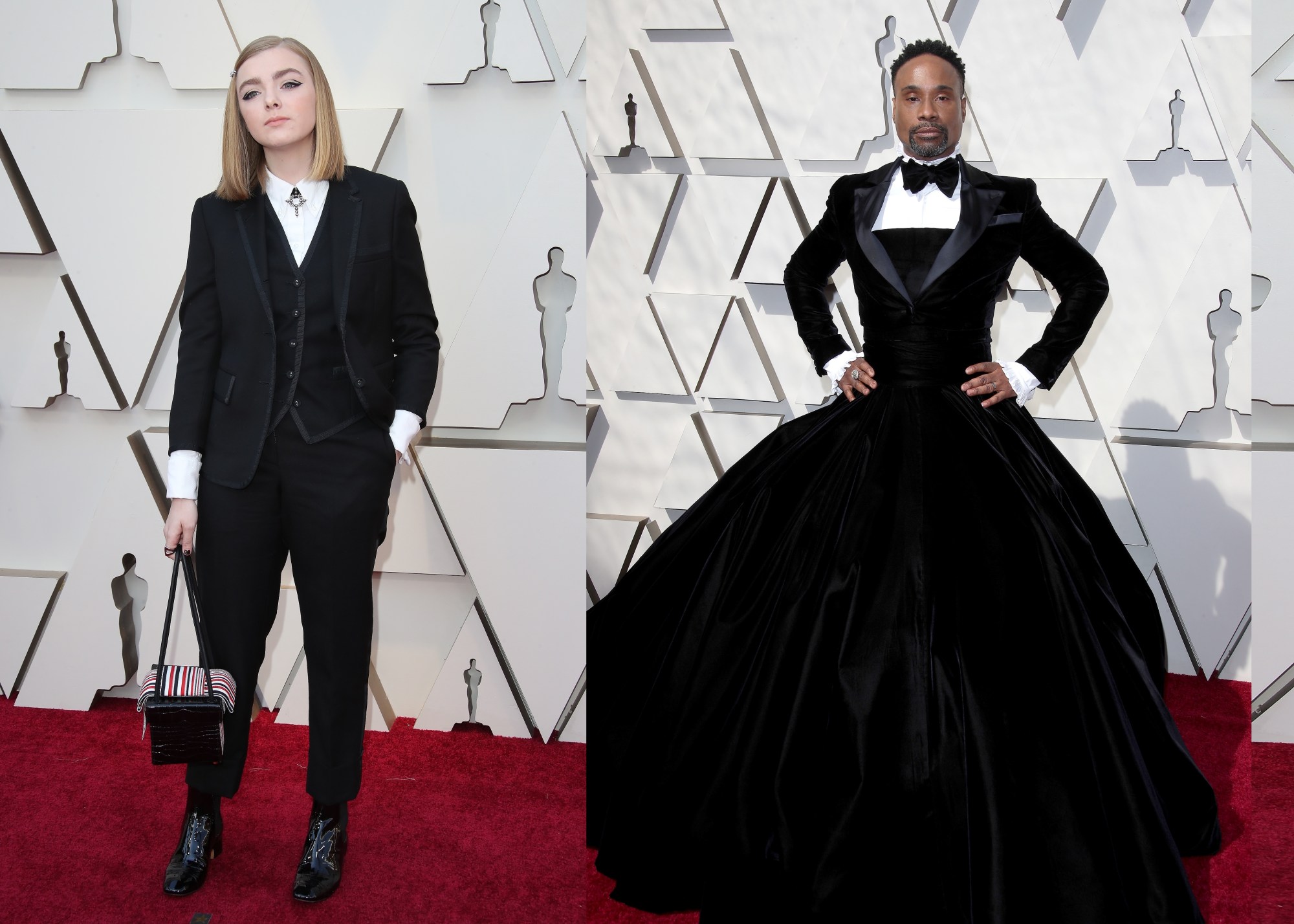The Golden Globes and Academy Awards serve as a microcosm of our larger society, which when examined via a metaphorical microscope, can provide us with great insight into various cultural shifts. In particular, the style on the red carpet itself is packed with critical information about how things are changing, especially when it comes to the nuances of current social justice issues such as gender equality, racism, and sexuality.
Take last year’s Golden Globes for example, in which many of Hollywood’s leading actresses banded together to promote the #TimesUp movement by wearing all black outfits in the wake of the Harvey Weinstein allegations. The public demonstration was not just about style — the outfits helped spread a bigger message that shifted the sentiment of the night from “what are you wearing?” to “we should all be speaking up and doing something about these issues.”
This year, a group of actors seemed to experiment more with gender expression through style on the red carpet as a means to challenge the boundaries of what is fashionably acceptable and what is not for public figures. For example, at the Oscars Elsie Fisher and Awkwafina both wore suits, while Billy Porter donned a tuxedo jacket with a velvet gown, Chadwick Boseman dressed in a sequined blazer, and Nicholas Hoult sported a black suit decorated with cascading pleats.
Traditionally, the red carpet has been a place where actors are expected to obey the gender binary, and their appearances have been highly policed in the media. Ben Barry, Chair of Fashion and Associate Professor of equity, diversity and inclusion at Ryerson University in Toronto, believes that Fisher and Awkwafina wore pantsuits as a means of associating themselves with masculinity and power. While suits have been symbolically worn by women since the early 1900s, their choices suggested that they did not care what was expected of them, or what repercussions these choices might have for their careers. Though today the likelihood of a pantsuit being detrimental to an actress’s career is doubtful.
However, Barry asserts that often, “when men have tried to cross the gender hierarchy and claim femininity by donning women’s clothes, the act remains highly stigmatized.” Consequently, he says that while some might consider this a representation of men giving up their power in the gender hierarchy, when certain groups try to cross gender lines, they are more subject to violence and other serious risks. Thus, dressing a certain way on and off the red carpet can threaten one’s safety, especially for marginalized groups.
Knowing that his style choices might spark some hate from social media users, Porter told Vogue before walking the red carpet, “People are going to be really uncomfortable with my black ass in a ball gown, but it’s not anybody’s business but mine,” he said. In this moment, he was also speaking to the complex intersection of sexuality and race, and the ways queer black men are often subject to more prejudice.
Still, there was deep intention behind his outfit. With this, Jason Kress, men’s and youth editor at trend forecaster Fashion Snoops, says that Porter’s look sent a message to people, particularly younger fans, that it’s okay to go against the grain and be your true self without the pressure of having to adhere to rigid guidelines of what’s considered masculine or feminine. According to him, “We’re starting to move far away from preconceived expectations of how to look and act.” Going one step further, Kress believes that Glenn Close’s viral reaction to Porter’s Oscars look was especially a reflection of the ways society is beginning to accept and support those who challenge the gender binary.
For Porter, wearing a gown on the red carpet was meant to be a conversation starter and a radical call for empathy for queer people of color and anyone else who strays from the norm — the day after the Oscars, he told The Associated Press, “We have to teach people how to treat us, we have to teach people how to love us, we have to teach people how to respect us, and the only way we do that is to respect ourselves.”
Barry argues that while Porter took a significant risk in wearing a gender nonconformity outfit on the red carpet, he still has privilege in dressing this way since he is an actor with financial resources that can help protect him from harm. Yet this is not to say his choices could influence his career, both positively or negatively.
As wearing outfits that challenge gender norms on the red carpet serves to question notions of femininity and masculinity, these style choices are ultimately helping the public reimagine what is deemed acceptable and what is not. In fact, Kress says, “it all points to how culture as a whole is shifting away from these archaic societal constructs, and embracing more inclusive outlooks on gender identity.” With the awards shows themselves still so divided by gender, it’s time to rethink the ways we police fashion and gender on the red carpet and beyond.
While using fashion to spread a sociopolitical agenda is nothing new, as we consider what the future holds as trans and nonbinary people claim more space, society will be forced to question gender as a larger concept, not just pertaining to masculinity and femininity.
